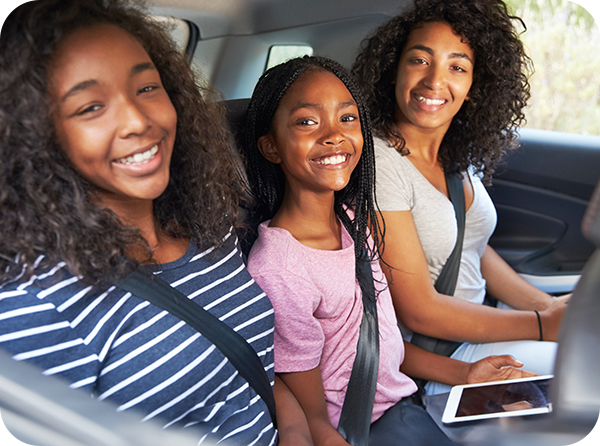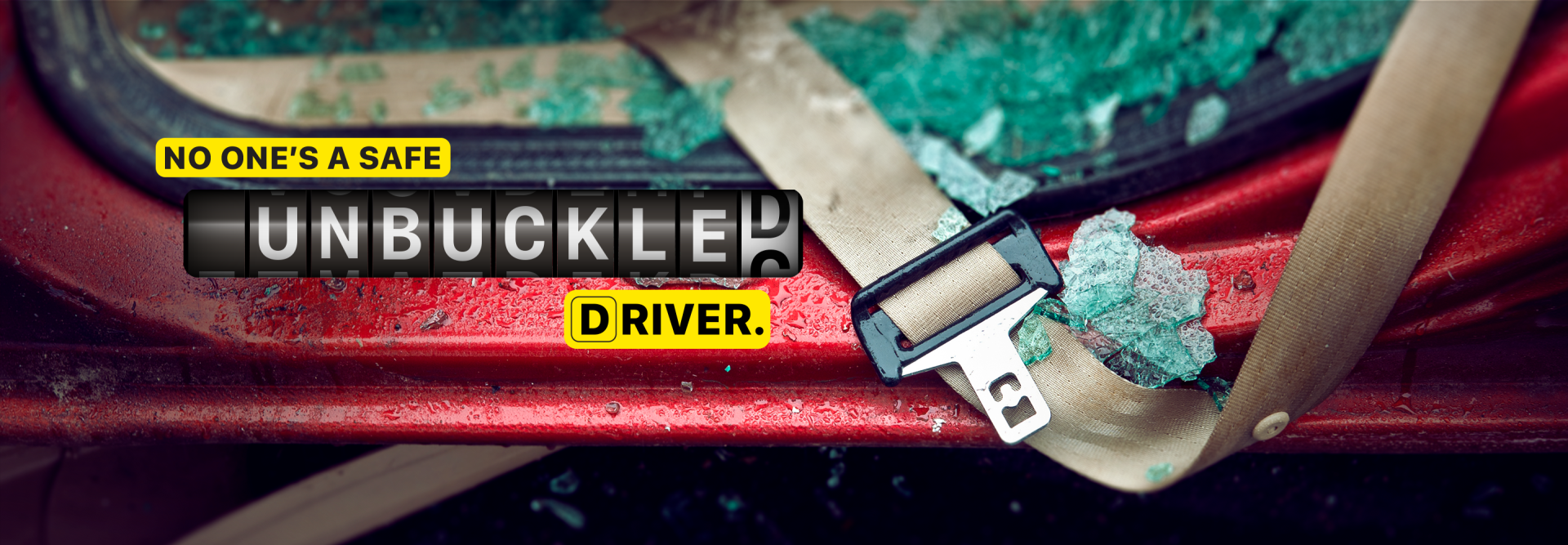Drive Smart, Iowa: Buckle Up
Seat belts save lives. Your seat belt is more than just a strap — it's a life-saving device. Buckling up is the simplest and most effective way to protect yourself and passengers on the road. Be a buckled-up driver.

5 Things You Should Know About Buckling Up
- It reduces your risk of serious injury by 50 percent.
- Nationally, seat belts save nearly 15,000 lives each year. In Iowa, they save about 140 lives each year, making them your best defense in a crash.
- In Iowa, it’s the law when you’re driving or riding in the front seat, but passengers 18 and over in the back seat are not required to wear a seat belt. However, unbuckled back seat passengers risk being seriously injured or worse in a crash.
- It keeps you and your passengers safe. Unbuckled passengers can become projectiles in a crash, endangering everyone in the vehicle.
- Buckling up is what smart drivers and passengers do. Always make sure everyone in the vehicle is buckled — even when you’re riding in a rideshare.

Seat Belt Tips
- Always wear it: Whether you’re driving or riding — even in the back seat or in a rideshare — buckle up on every trip. Most crashes happen close to home. Buckle up, no matter the distance.
- Check your fit: Ensure the seat belt fits snugly across your hips and chest. If you’re pregnant, position the belt low on your hips and across the shoulder.
- Make sure to use the safest restraints for children: Use appropriate car seats and booster seats for young children. Ensure they transition to seat belts when they are ready.
- Regular maintenance: Check your seat belts regularly for wear and tear. Replace them if they show signs of damage.

Seat Belt Safety for Adults
As an adult, you have the responsibility to protect yourself and everyone in your vehicle. Always wear your seat belt, no matter the trip’s length. Airbags are designed to work with seat belts, not replace them. Combining both provides maximum protection in a crash.
- Lap belt position: Secure the lap belt across your hips, below your stomach.
- Shoulder belt position: Position the shoulder belt across your chest and shoulder, away from your neck.
- Adjust for comfort: Adjust the seat belt height to ensure proper fit.
Following these guidelines ensures you’re using your seat belt effectively, offering the best protection. Be a hero, buckle up every time.

Seat Belt Safety for Tweens
Tweens can be resistant to rules. Make sure they understand how seat belts can protect them and keep them from being thrown around in a crash.
- Back against the seat: Make sure your child can keep their back against the seat without slouching.
- Knees bent at the edge: They should be able to naturally bend their knees over the edge of the seat without slouching.
- Feet flat on the floor: They should be able to touch the floor with their feet comfortably.
- Lap belt position: The lap belt should lie snugly across the upper thighs, not the stomach.
- Shoulder belt position: The shoulder belt should fit snug across the chest and shoulder, not the neck or face.
- Booster seats: If your child is too small for the seat belt to fit correctly, use a booster seat to ensure proper positioning.
Always double-check the fit before starting the trip. Be a smart driver — ensure everyone is buckled up correctly.

Seat Belt Safety for Back Seat Riders
In 2022, nearly 60 percent of back seat passengers killed in crashes were not wearing seat belts. Buckle up every trip, every time, regardless of where you sit in the vehicle, including the back seat.
To ensure safety in the back seat, keep these points in mind:
- Stay secured: Buckling up keeps you safe inside the vehicle. Ejection is almost always deadly.
- Wear a seat belt in every vehicle: Always wear your seat belt in taxis, limousines, and rideshares.
- Correct positioning:
- Secure the lap belt across your hips, below your stomach.
- Place the shoulder belt across the middle of your chest and away from your neck.
- Adjust the seat belt height to prevent the shoulder belt from resting on your neck.
- Buckle children in the right seat based on their age and size. All children under 13 should ride in the back seat.
Wearing a seat belt in the back seat has been proven to save lives and significantly increases your chance of surviving a crash. Always buckle up and ensure all passengers do the same. Be a hero, buckle up every time.
Seat Belt FAQs
Yes, it’s essential to wear a seat belt in the back seat to protect yourself and others in the event of a crash.
In Iowa, fines for not wearing a seat belt can range from $50 to higher amounts if there are additional violations.
A properly fitting seat belt should lie across your shoulder and chest, not your neck or face, and across your hips, not your stomach.
There are specific exemptions, such as medical conditions, but these require documentation. Always check the current Iowa state laws for details.
Children can typically transition to seat belts when they are at least 8 years old or 4’9″ tall, see our child passenger safety guidelines for more details.
Take Action Now: Raise Awareness with Traffic Safety Grants
Help make Iowa’s roads safer! The Governor’s Traffic Safety Bureau provides grants to support funding opportunities for state, county, and local government agencies; non-profit organizations; institutions of higher education; and hospitals.
Together, we can reduce traffic-related deaths and injuries on our roads.
